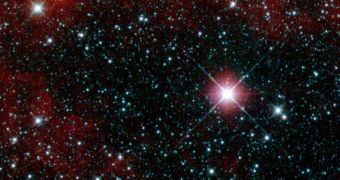The WISE observatory, launched on December 14, 2009, has recently snapped its first photos of the Universe, the American space agency is proud to announce. Praised as one of the most advanced infrared instruments in orbit today, the Wide-Field Infrared Survey Explorer is scheduled to conduct in-depth surveys of the skies, as it orbits our planet, and to provide new knowledge on the solar system, the galaxy, and the Universe. According to mission controllers, it is well on its tracks, as the new images can prove, Space reports.
After blowing up its lens cap just last week, WISE is currently undergoing a testing and calibration stage, which is meant to ensure that the observatory collects the best possible images of whatever target it's surveying. This is done through an internal scan mirror, which is used to keep the telescope aware of the motions it makes in orbit, and to help it compensate for them. “Right now, we are busy matching the rate of the scan mirror to the rate of the spacecraft, so we will capture sharp pictures as our telescope sweeps across the sky,” NASA scientist William Irace explains. He is the project manager for WISE, and is based at the space agency's Jet Propulsion Laboratory, in Pasadena, California.
Among the most peculiar and interesting objects that WISE will need to survey, experts include dark asteroids, which are incredibly cold, new, yet-unknown planets, brown dwarfs, the objects that blur the differences between stars and planets, as well as other cold structures. According to experts who are intimately familiar with the mission, the observatory is able to snap about 11 pictures per second, for a total of 1.5 million photos in ten months of operations. The real advantage is that it will do so with instruments that are about 1,000 times more sensitive than those on its predecessors.
In order to be able to make these astounding observations, the instruments aboard WISE need to be cooled to temperatures lower than those of their targets. In order to ensure that they can capture as many classes of objects as possible, experts built a special system on the satellite that cools it to around minus 265 degrees Celsius, or minus 445 degrees Fahrenheit. This is just 8 degrees Kelvin, a little over absolute zero, and makes the devices some of the most chilly things in the entire Universe. The first atlases featuring WISE all-sky maps will be published by March 2012, NASA officials say.

 14 DAY TRIAL //
14 DAY TRIAL //